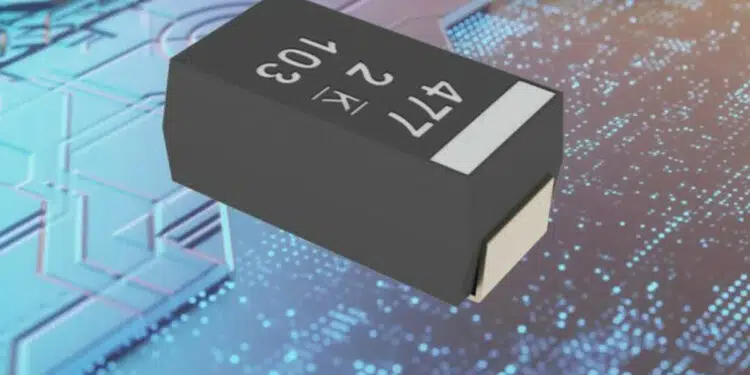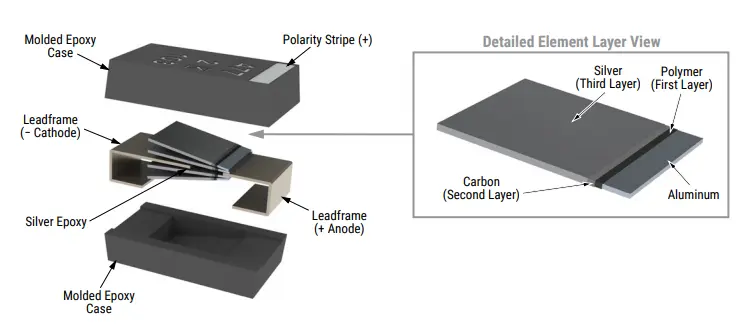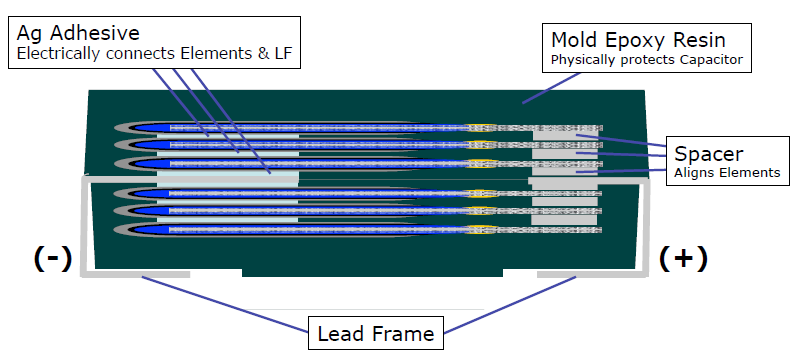KEMET enhanced AO-CAP® aluminum polymer SMD chip capacitor A700 series product offering with the new material setting and manufacturing flow, allowing a specification expansion of endurance life at rated voltage and storage unbiased at 125ºC up to 3000h.
High demand in power management and miniaturization requirements combined with high-temperature profiles over the lifespan are today’s challenges that designers need to solve.
KEMET A700 Plus Performance Aluminum Organic Capacitor AO-CAP is a solid-state aluminum capacitor. The cathode is a solid conductive organic polymer, which results in very low ESR and improved capacitance retention at high frequency.
The construction is based on the stacking of aluminum elements, including the dielectric Al2O3 and the polymer counter electrode on the surface. External layers are built with carbon and silver. The construction and a photo from an element are presented in Figures 1 and 2.
Several element foils are stacked and positioned within the capacitor construction, a schematic of the construction is shown in Figure 3. Due to its construction, it has very low ESR capabilities.
AO-CAP® may be operated at steady-state voltages up to 100% of rated voltage without the need of derating. This characteristic is due to the low-stress interface with the dielectric and polymer counter electrode and is a favorable reliability parameter.
Since there is no liquid electrolyte, the A700 offers long operational lifetimes, low ESR, and high operational temperatures. The ESR in frequency shows a broader curve with values < 10mOhm and minimal variation with temperature. Go here to access the K-SIM for A700 .
Enhancements to the design and selected material upgrades were introduced to expand the 125ºC Life Endurance at rated voltage up to 3000h. In addition, the Storage Endurance was also extended to 125ºC.
The initial product portfolio is limited to one part number suitable to support low voltage power rails in typical DC/DC converters, servers, telecommunications, displays, and industrial applications. AO-CAP selection guide summary is shown in Table 1 below.
Conclusion
The new A700 Plus Performance AO-CAP brings the Polymer Aluminum capability to extreme extended lifespan application conditions while meeting low ESR and high capacitor ripple current capability.



































